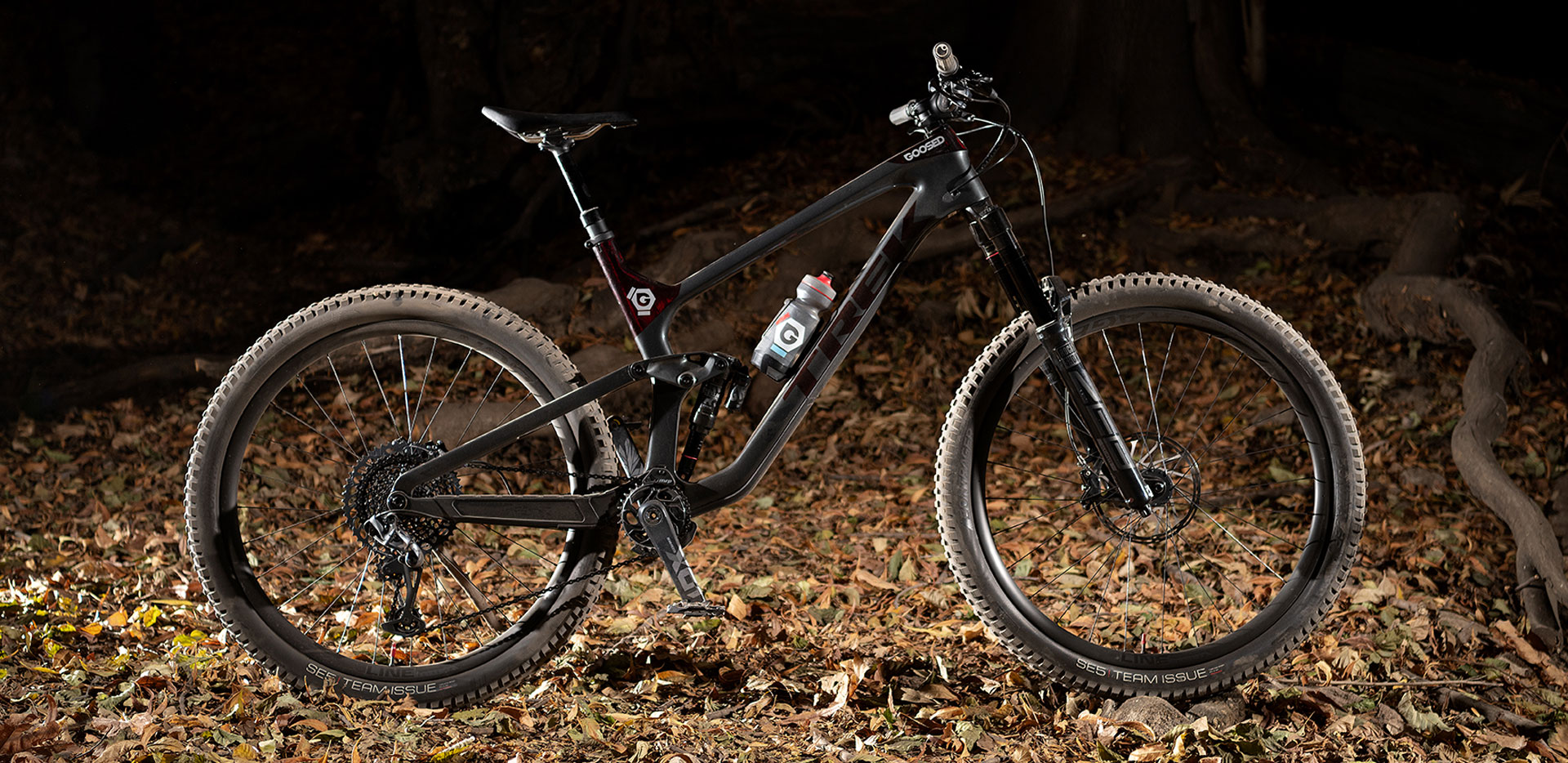
TREK SLASH 9.9 XO1 LONG-TERM REVIEW
FORWARD THINKING SLASH WITH NEW SHOCK TECHNOLOGY
Words by Mike Wirth/Gooseworks
Photos by Jon Coulthard
Our season of bike tests with the new Trek Slash was supposed to include a summer of burning laps at the bike park, utilizing the comforts of a chairlift to feed our gravity habit. With bike park operations varying greatly due to COVID-19, and shuttle rides feeling risky with or without masks, we had the chance to test Trek’s new long-travel enduro race machine as it was designed to be ridden, as an enduro race bike with gravity chops that can still be used to climb. We pedaled this bike to the top of every mountain surrounding the Los Angeles area, and then pointed it down the gnarliest lines we could find at least twice a week for the last few months.
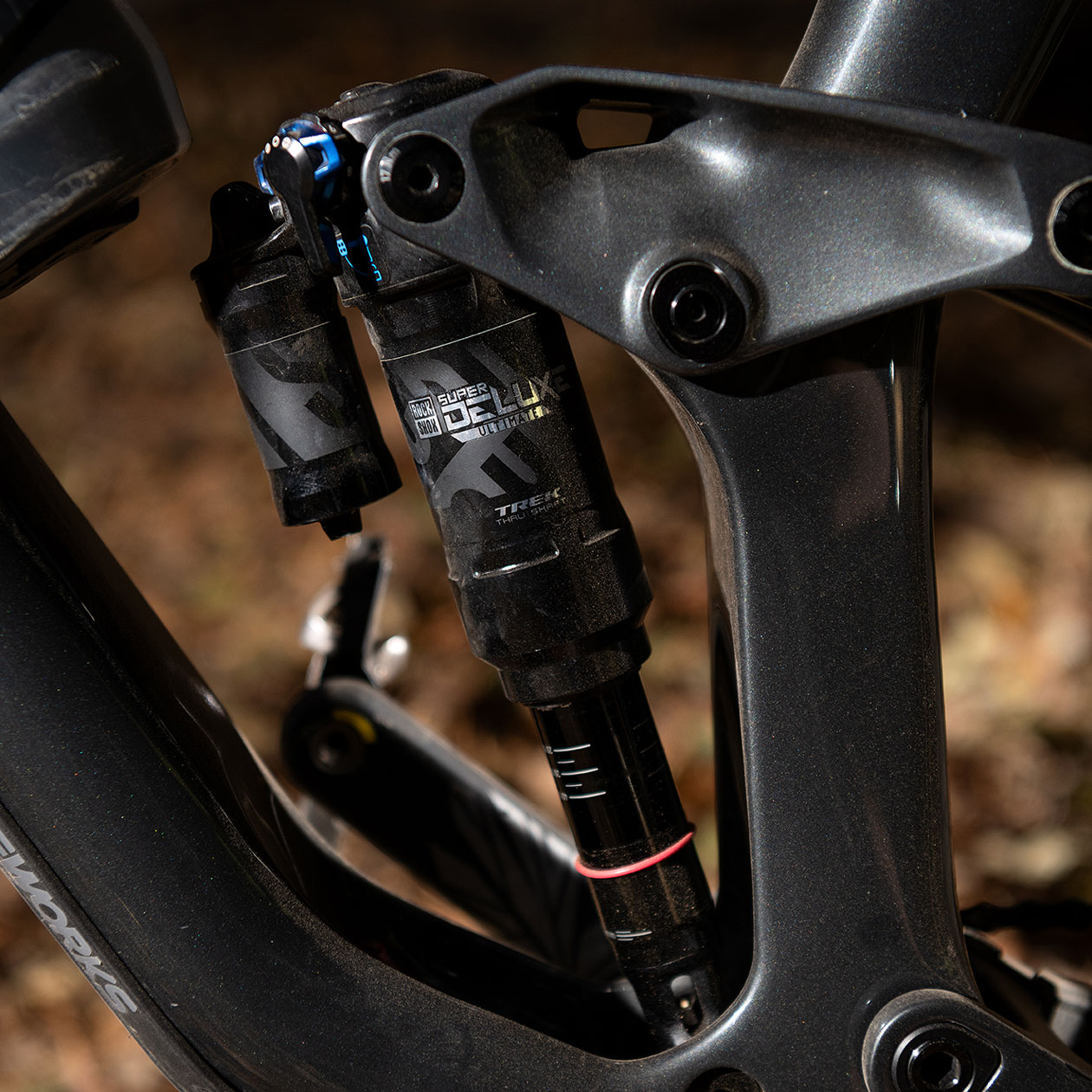
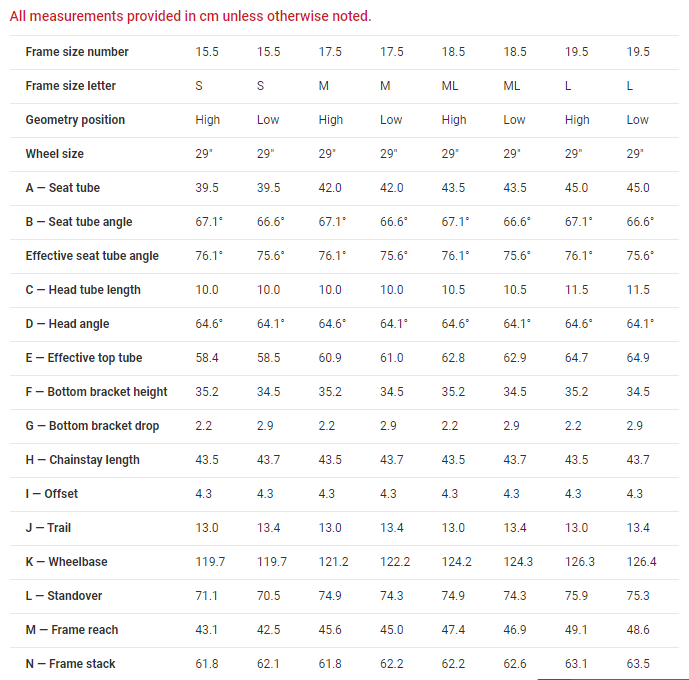
THE LAB
We won’t delve too deep into the lab in this review, as we covered alot of the major changes and updates to the Slash in our First Ride Report a couple months ago. The new Trek Slash gets a 10-millimeter bump in travel from last year’s version, now sporting 160mm in the rear, and 170mm in the front. Geometry changes follow the “longer, lower, slacker” line of thinking, but still not so far as to call it “extreme.” The frame still has Trek’s Knock Block headset system to protect the top tube and cables in a crash, but the fork crown does clear the downtube, so Knock Block is removable on this year’s Slash. When asked why they went this way, Trek simply said that the feature is polarizing on whether the protection worth limiting steering range. So they leave it up to the rider. Other nice features include internal frame storage for every model, including the alloy ones. A new and larger 34.9mm diameter seat tube accommodates more robust dropper posts. The BSA 73mm threaded bottom bracket is easier to service and less creaky than press fit versions. Something mechanics and tinkerers like myself are very happy about. A full-length downtube guard provides added protection, especially for shuttling, which is another awesome feature.
GEOMETRY CHANGES INCLUDE
• Head tube gets 0.6 degrees slacker (high: 64.6, low: 64.1)
• Seat tube angle gets almost 2 degrees steeper (high: 76.1, low: 75.6)
• Reach gets longer by 20-30mm depending on size
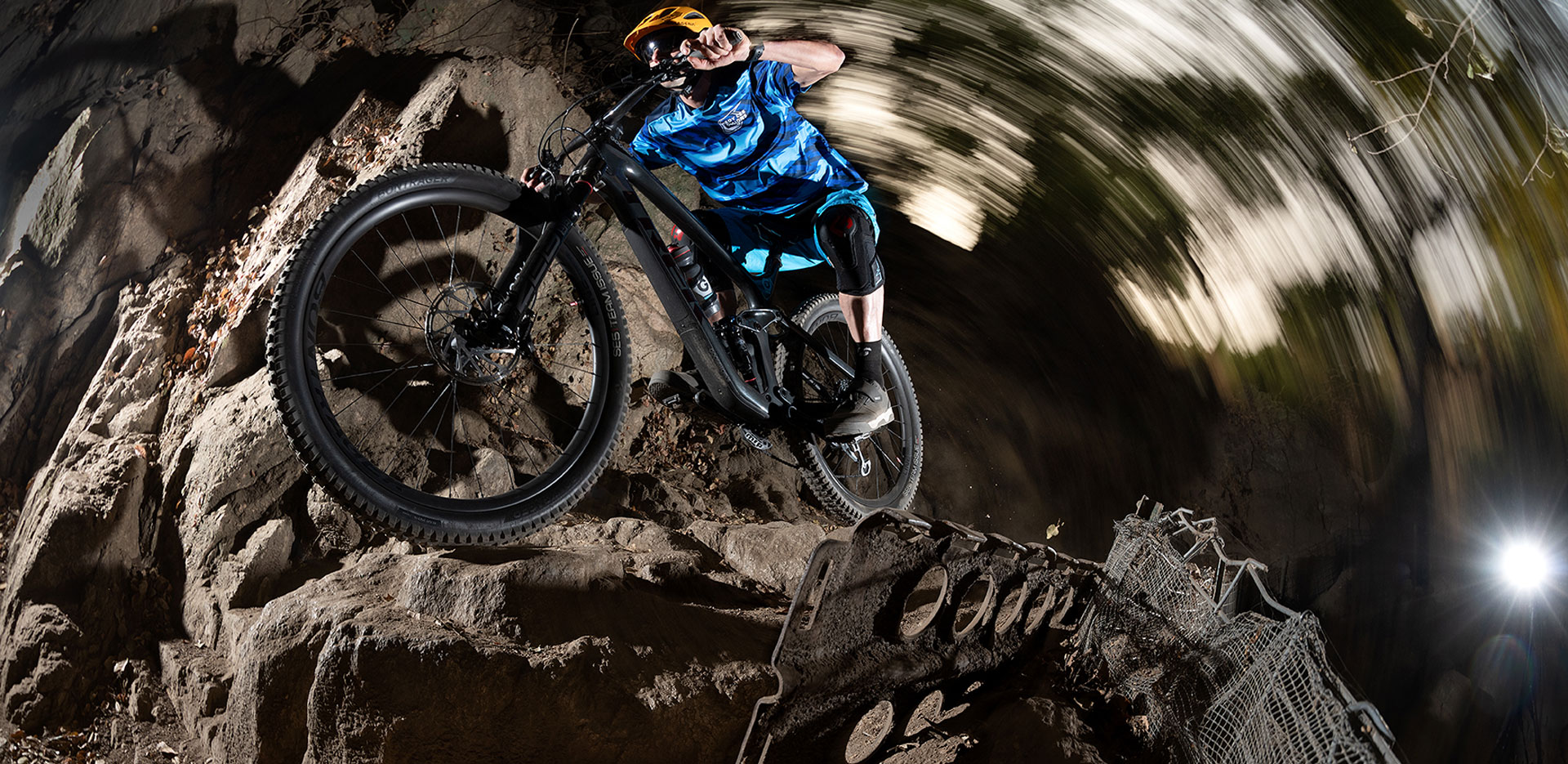
THE DIRT
The size XL (21.5”) test bike feels on the big side compared to extra larges from some other brands, which should make all you “Longer is better” folks happy. The 2021 version of the Trek Slash gets a slightly longer top tube, and is paired with a slightly steeper seat tube angle that hides some of this length. Overall, the position is quite well balanced with a position that’s upright yet aggressive.
CLIMBING: RockShox and Trek Bicycles have designed the RockShox Super Deluxe with several options for effective ride settings. For long grinds and fire roads, the switch can be flipped on, which leaves the rear suspension very firm. This puts the rider in the most efficient position with the shock high in its travel and the rider weight forward. Suspension movement is minimal and helps deliver the most power. For more technical climbs, the switch can be flipped open to activate one of three additional compression modes. The “Open” setting is simply too soft for most climbing applications. However, Trek has done a nice job making the other two modes effective for keeping the suspension moving and improving traction on loose terrain. The “+” setting is the firmest of these “Open” shock modes, and keeps the rider higher in the travel while still allowing it to flutter over trail chatter and keep the tires hooked up. Whether you like to set and forget, or reach for a switch every time the trail points up, the Slash has a setting for that.
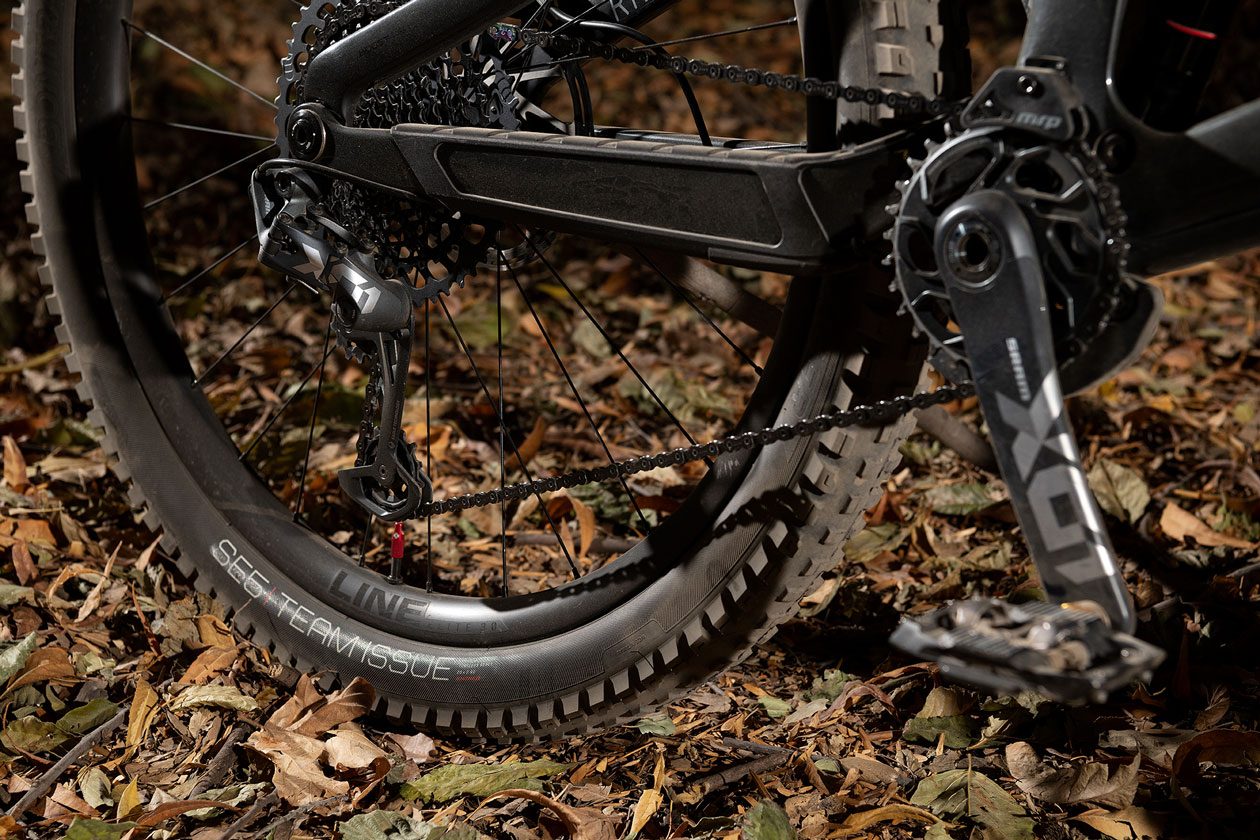
DESCENDING: The same shock modes that leave options for the climbing modes make for three distinct personalities descending with the Slash. However, no matter where the shock is set, the rest of the bike is built for speed on the descents. The capable geometry beg the rider to push the envelope on hairy descents. We found confidence to hit chutes and steeps our first ride out that have given us pause on lesser bikes. The stable nature of the Slash has a calmness when the terrain feels unforgiving. It’s like riding the back of a Grizzly bear as it powers through the forest. Riding the Trek Slash makes the hardest features feel easier. It almost seems to nudge your eyes to look farther down the trail than you think you need, because you don’t realize how fast the suspension is gobbling the obstacles beneath you and how much sooner you’ll be at that rock or root way down the trail.
I had most recently been spending time on a Yeti SB150 and found that the Slash descends with much more confidence, granted it couuld be the extra bit of travel and shock tune, but when it came time to point the Slash downhill it was steps ahead in terms of speed and confidence. Although the Trek Slash feels like a massive bike in almost every way, it is in no way sluggish. It’s quite amazing that even the XL we tested rides as snappily and lively as a much smaller, shorter travel bike. With the shock set to the firmer “+” or “O” modes, the rear suspension firms slightly and becomes more flickable. These are the settings we used on jump and berm trails. Testers noted the added support gave the bike a responsive feel that gave plenty of pop off jumps and came off the ground easily to hit the little jib features along the way. With these two modes, the bike feels remarkably playful and accelerates quicker when pumping transitions. With the rear shock set to the softest “-“ setting, the Slash’s suspension becomes much more plush and easy to activate. This setting keeps rider weight low and back, and works best on gnarly, steep terrain. With the shock set to this mode, the Slash is remarkably supple over small and medium hits with solid mid stroke support. The bike digs deep into the travel on big hits and matches the RockShox Zeb fork up front.
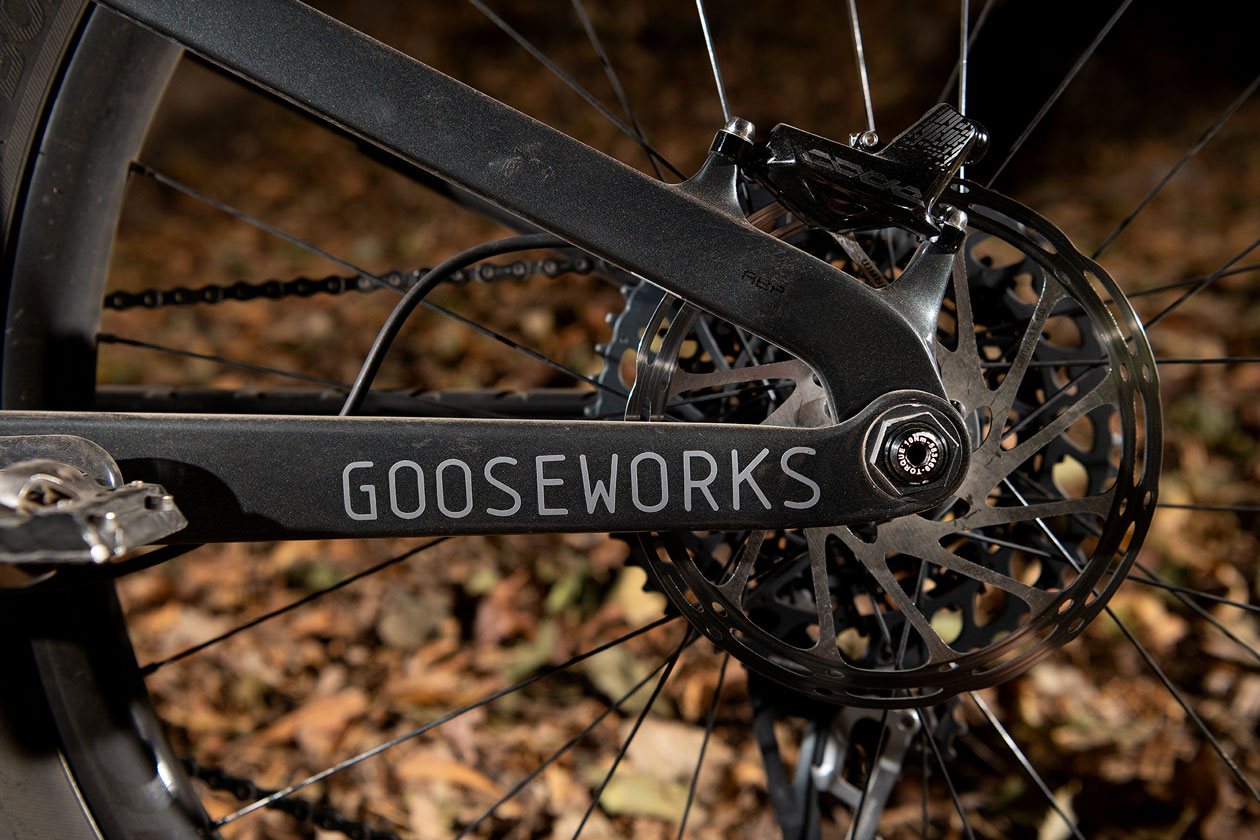
MINOR GRIPES: The included multi tool comes with a fairly standard array of tools. It fits neatly inside the steerer tube, out of sight but not out of reach for a quick trailside repair. The stubby bits can be difficult to use, and proved too short to easily use them on bolts that are even slightly recessed, like the bolts on a SRAM Code brake that’s rubbing.
Our first ride out had us second guessing Bontrager SE5 Team Issue tire spec. They sport a a relatively lightweight sidewall that accelerates quickly with impressively low rolling resistance. However, we quickly pinch flatted the tire and ripped a sidewall on a rock that didn’t look overly menacing. Call it first ride bad luck, but we increased our pressure from 24psi to 28 for more insurance. The rounded profile is predictable and provides a nice bite when cornering, although it’s not as responsive as a more squarely-profiled tire. Straight braking traction is ample, though, and the Slash makes the most of the knobs to eek out every bit of handling prowess. Running the tires with lower pressures and a foam liner to provide support the sidewalls might be the secret here.
What may be a gripe here is actually Trek’s reaction to forums so we can’t fault them too much there. The 820-millimeter Bontrager bar is massive, and will need to be cut down for most riders. Even on our size XL test bike, we cut our bars down to 790, but it’s nice riders have the option.
We had shock mount bolts come loose twice during a season of testing. The rest of the hardware performed impeccably. The bottom bracket started creaking on us a couple times during the season, likely from too many stream crossings and bike washings post rides. The threaded bottom bracket makes servicing that area much quicker and easier than a press-fit BB. We applaud Trek for this spec. The bearings in the BB and the frame are still smooth after a full season of hard riding through creeks and SoCal’s grease-eating dust.
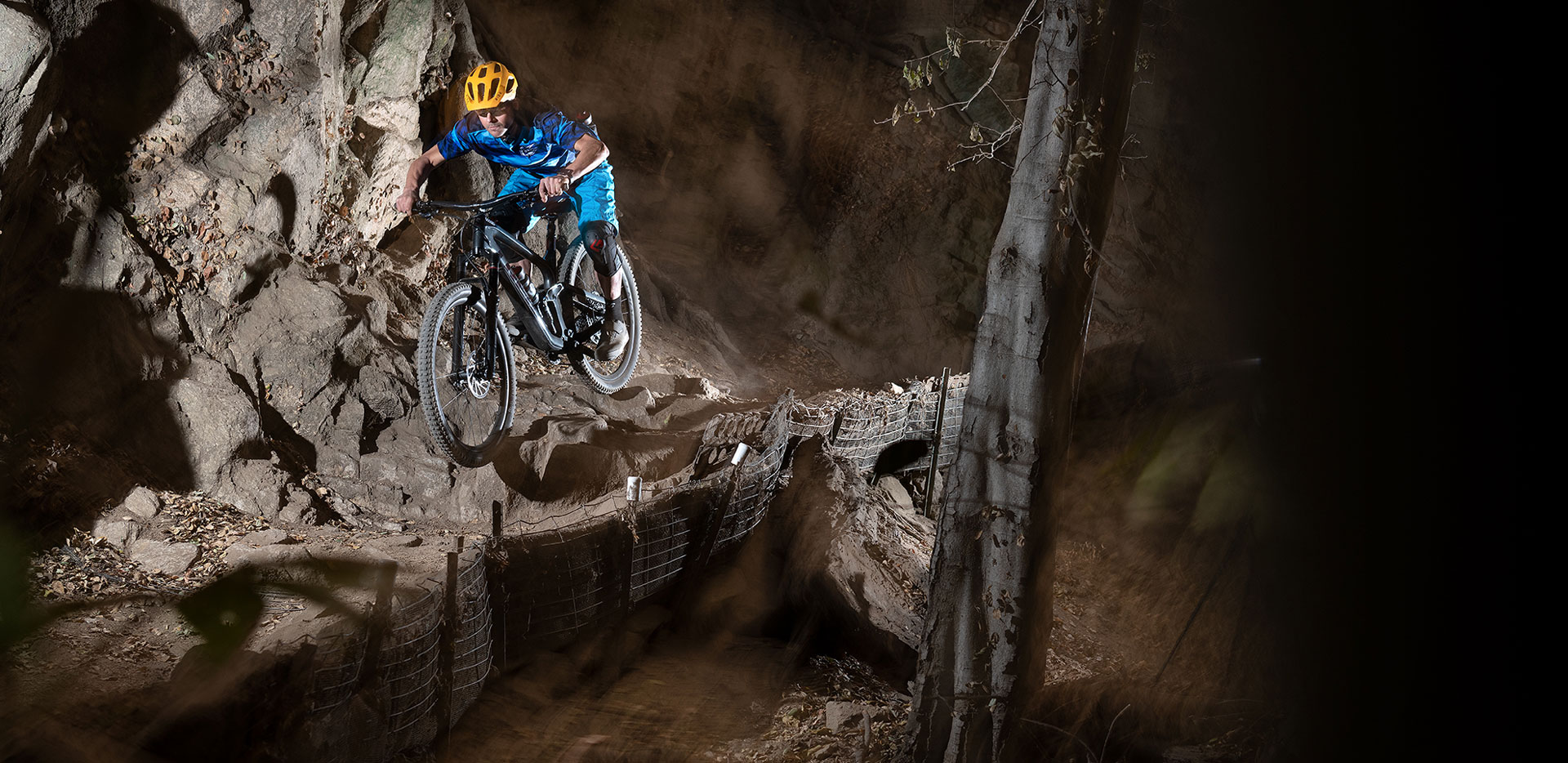
The Wolf’s Last Word
Back in the day I always imagined a “unicorn bike” as being an anorexic DH bike built with parts so light it floated uphill easily and then smashed downhills like a gorilla. Lucky for us, bikes have evolved beyond our childhood dreams and now we can have our cake and eat it too. The Trek Slash has a supreme capability to make climbing absolutely bearable and fairly efficient, which is impressive for it’s travel and capability on the downs. Trek’s new Slash has descending chops that rival any long travel bike we can think of. During this unusual year when no chairlifts were available to test, this Slash became the most effective tool to access gnarly trails, with its sort of “portable chairlift” feel.
The Slash throws every bit of technology Trek has at this no-holds barred enduro race bike. It’s clear that they listened to the feedback from their team, because this bike is interested in going faster at every turn. The geometry is new-school and modern, but feels like its been meticulously tested by the race team to not be arm-chair engineer extreme. It feels like the product of its EWS winning predecessors rather than experimental and new. The same can be said for the confidence we felt dropping into steep chutes on our first ride. The Slash exudes stability and speed on descents and doesn’t feel limited as a “gravity only” bike. The new shock allows the rider to dial the bike to have a wide range of personalities to satisfy the needs of both “pump and jump” or “smash the steep lines” style riders. Enduro racers will continue to love the Slash. Riders looking for a burly trailbike that can truly handle it all will love it too. We’re just happy ours was able to save our 2020 gravity chasing riding season from being a complete bust. ![]()
Price: $7,999
Website: Trekbikes.com
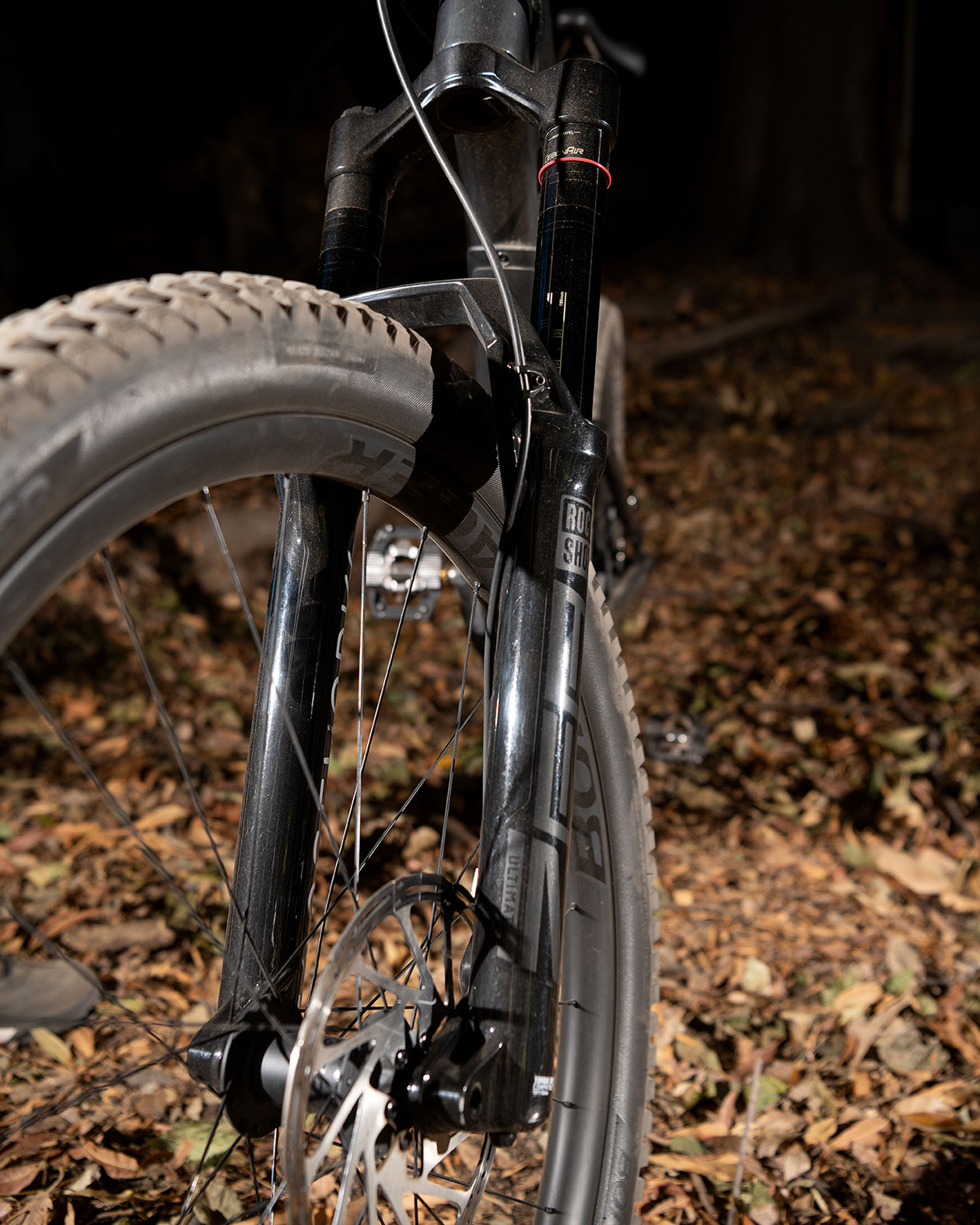
SPECIFICATIONS
CHASSIS
Frame: OCLV Mountain Carbon (160mm travel)
Fork: RockShox ZEB Select+, 44mm offset, (170mm travel)
Shock: RockShox Super Deluxe Ultimate Thru Shaft
COCKPIT
Brakes: SRAM Code
Shifter: SRAM X01
Handlebar: Bontrager Line Pro Carbon (820mm)
Headset: Knock Block 2.0 Integrated
Stem: Bontrager XR Trail (35mm)
Saddle: Bontrager Arvada
Seatpost: Bontrager Line Elite Dropper
WHEELS
Wheelset: Bontrager Line Carbon 30 (29”, 54t driver)
Tires: Bontrager SE4 Team Issue
DRIVETRAIN
Bottom Bracket: SRAM DUB
Cassette: SRAM X01 (10-52t)
Cranks: SRAM X01
Derailleur: SRAM X01
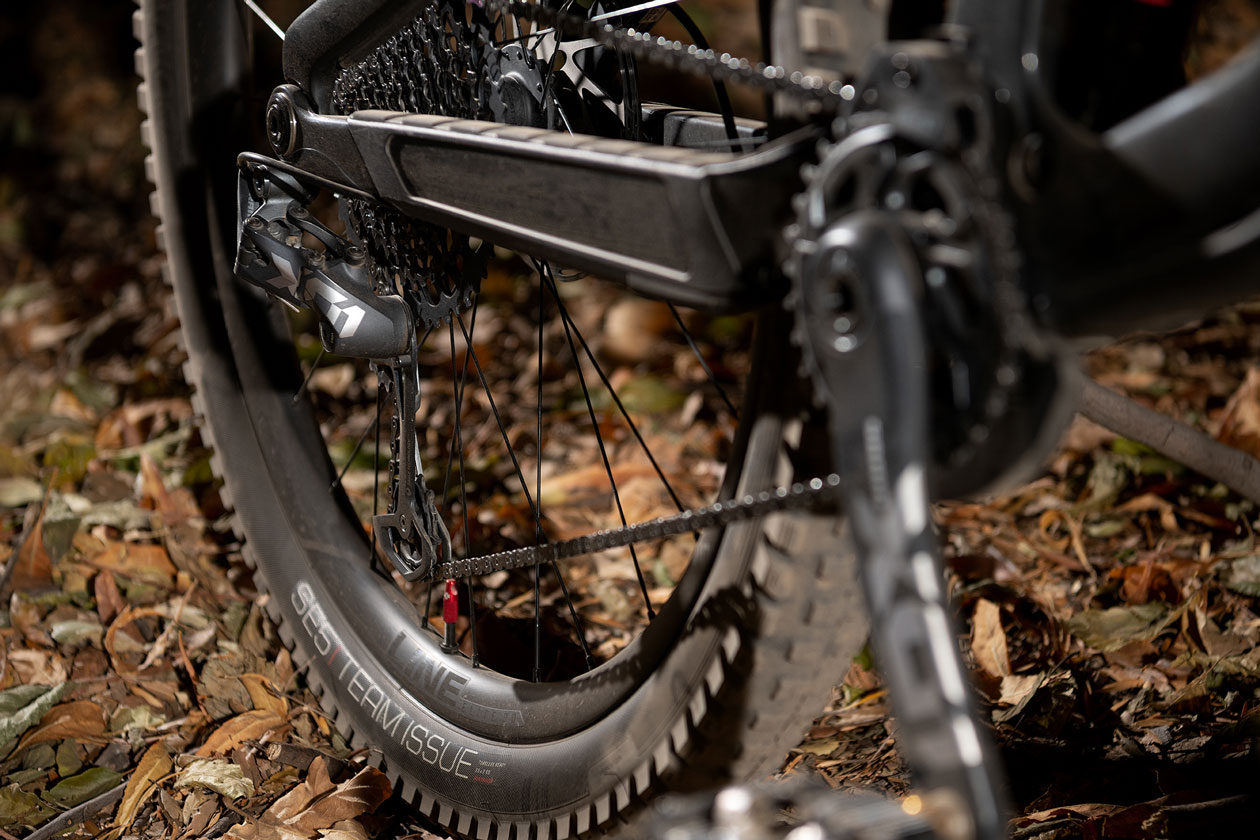
We Dig
Excellent geo that’s progressive without being extreme
Effective and easy to use shock tune
RockShox Zeb fork and build kit are up for a challenge
Finish quality on paint, hardware and house brand components top-notch
We Don’t
Slashed sidewall on Bontrager SE5 tire
SRAM Code brakes impossible to adjust with included multi tool, and they require adjustments
LEAVE A COMMENT | WIN FREE STUFF
Want to win some free schwag? Leave a comment and vote up the most thoughtful comments and each month we’ll pick a winner. The person with the smartest and most helpful replies will earn some sweet new gear. Join the Pack and get the latest news and read the latest reviews on the top mountain and electric mountain bikes.
